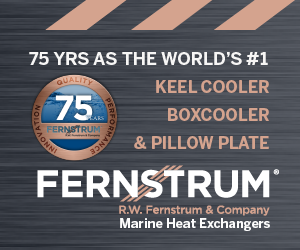WODCON Panel Features Dredging Execs
This year’s World Dredging Congress and Exhibition (WODCON), held in San Diego June 23–27, featured a discussion by a panel of dredging contractor executives. The panel included Fred Paup, chairman of the board and executive vice president of Manson Construction; Lasse Petterson, CEO of Great Lakes Dredge & Dock; John Sullivan, CEO and managing principal of Callan Marine; and Eric Ellefsen, president and CEO of Weeks Marine.
The session opened with each panelist sharing a bit about himself and his company.
Paup, who’s been at Manson Construction for 32 years, said the company was started “six score years ago by a gentleman named Peter Manson.” Paup, chairman of Manson’s board of directors for about 13 years, said the company’s business portfolio is about 50 percent heavy civil marine construction and 50 percent dredging.
Petterson, who has been at Great Lakes Dredge & Dock for seven years, previously worked in the oil and gas industry. He was also involved in engineering and construction projects around the world and ran a shipping line out of London. Great Lakes Dredge & Dock started about 54 years ago in Chicago, though the company is now headquartered in Houston.
“Many of our colleagues entered this company from university, and they spend a whole career in the company,” Petterson said. “They say they all get mud in the veins. I would say, after seven years in the company, it’s really a fascinating industry, and I’m starting to get a little mud in my veins.”
Great Lakes has 15 ocean-going dredges in its fleet, and over the past seven years, the company has spent almost $800 million to modernize its fleet. The company is also investing in a number of “multi-cats.”
Sullivan opened by identifying Callan as “easily the youngest company up here.”
“We started Callan—myself and my two brothers, we’re a third in everything that we do—in 2009 mainly because we bought a marine terminal in Galveston, Texas, … and we needed a dredge ourselves,” Sullivan said. “We didn’t mean to get in the dredging business, but we found ourselves in it.”
Today, Callan has eight cutter suction dredges, along with a marine construction division.
“Our two largest [dredges] are the General Arnold and the General McArthur, which are the two largest cutter suction dredges in the country,” Sullivan said. “And we have the General Bradley that’s also a larger cutter suction dredge.”
Sullivan said, while Callan does a lot of work for the Corps of Engineers and port authorities, the company also works for private ship docks. Over the past number of years, Callan has invested “well over $500 million” into its dredge fleet. Sullivan said the dredging industry is “one that we want to stick in, stay in and try to make more efficient.”
Finally, Ellefsen described how he has 40 years in the dredging industry, the last 32 with Weeks Marine, which was founded in 1920 in the New York-New Jersey Harbor. About two and a half years ago, Kiewit Corporation acquired Weeks Marine.
Greg Trauthwein, president of New Wave Media, moderator of the panel discussion, first posed a question about safety, technology and company culture. Petterson pointed to Great Lakes’ “incident and injury-free culture” and how that played a role in the company building two multicats.
“It’s a major investment for us, but I would say it pays off also operationally where this operation can be done safely but also efficiently, so it improved the performance of our products,” Petterson said. “It’s paramount for us to keep people safe.”
Sullivan emphasized the importance of communication from leadership in good times and bad. He also echoed Petterson in saying Callan is in the process of building two multicats.
“Building new vessels is incredibly challenging, incredibly expensive, and the price tag you pay is not the price that it costs,” Sullivan said, “but it’s certainly worth the long-term investment.”
Trauthwein also highlighted that, among the dredging companies represented on the stage, there were family-owned, employee-owned and publicly held companies. He then asked how those structures impact company culture.
Paup discussed briefly how a company’s structure can impact its access to capital, but ultimately even that comes back to relationships. Each company executive emphasized taking the long approach to contracts, investments and commitment to their teams.
“It’s not about next year’s program,” Ellefsen said. “It’s about the next couple of decades of programming and where we’re trending on that.”



